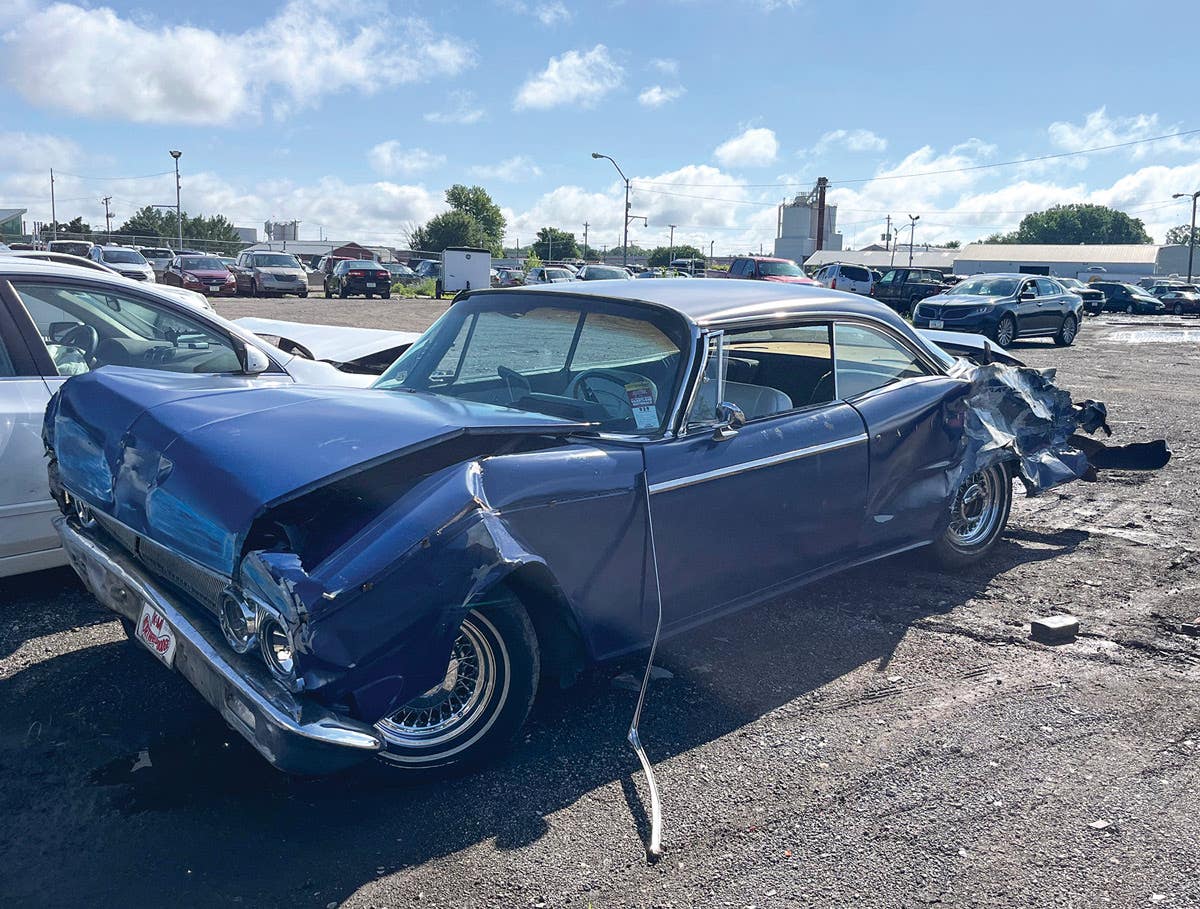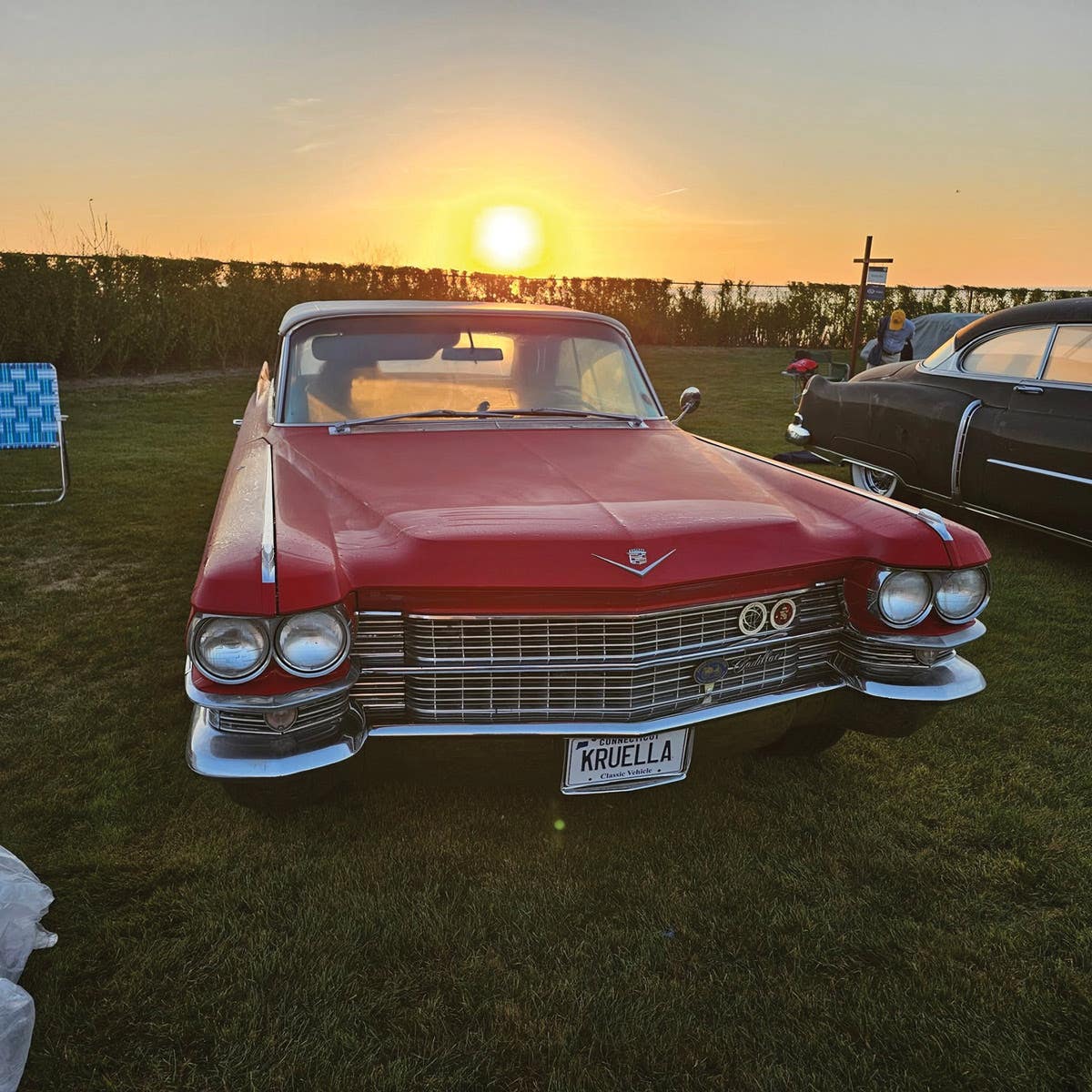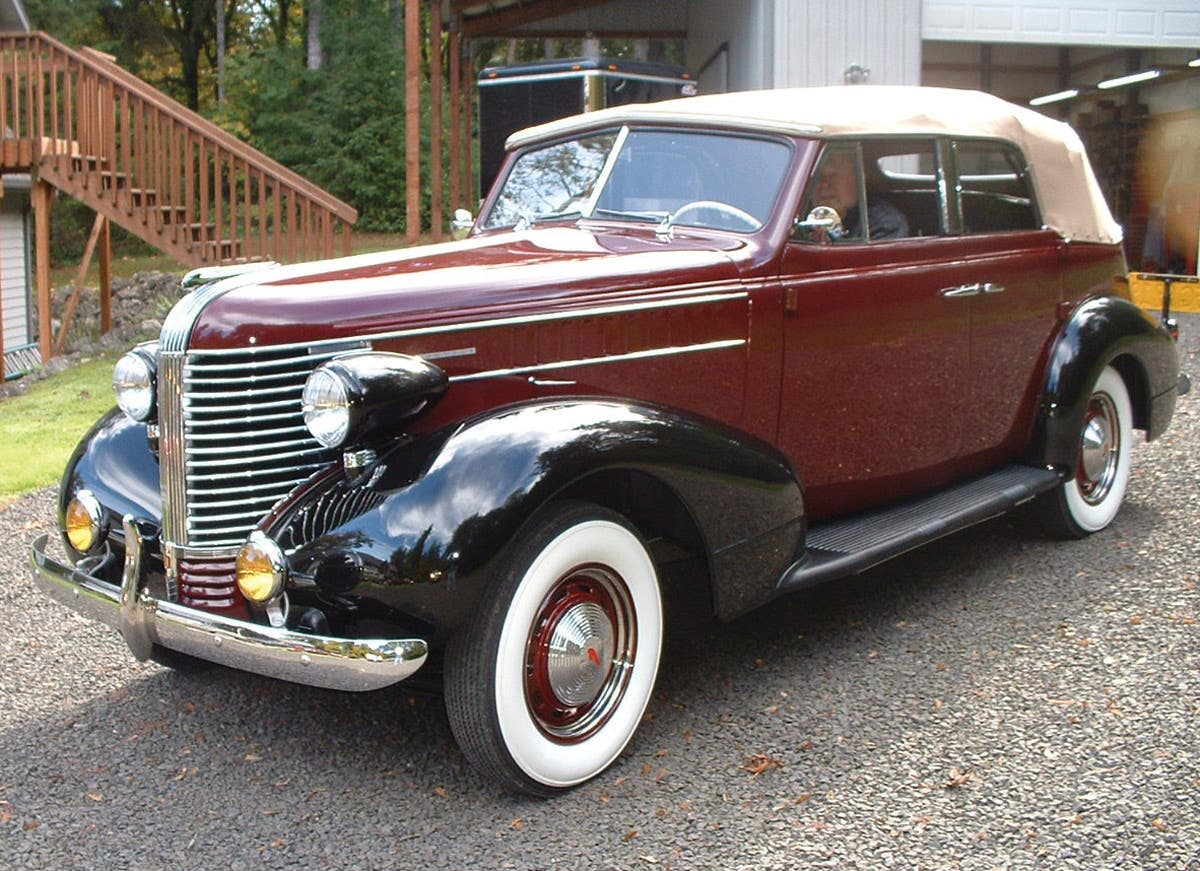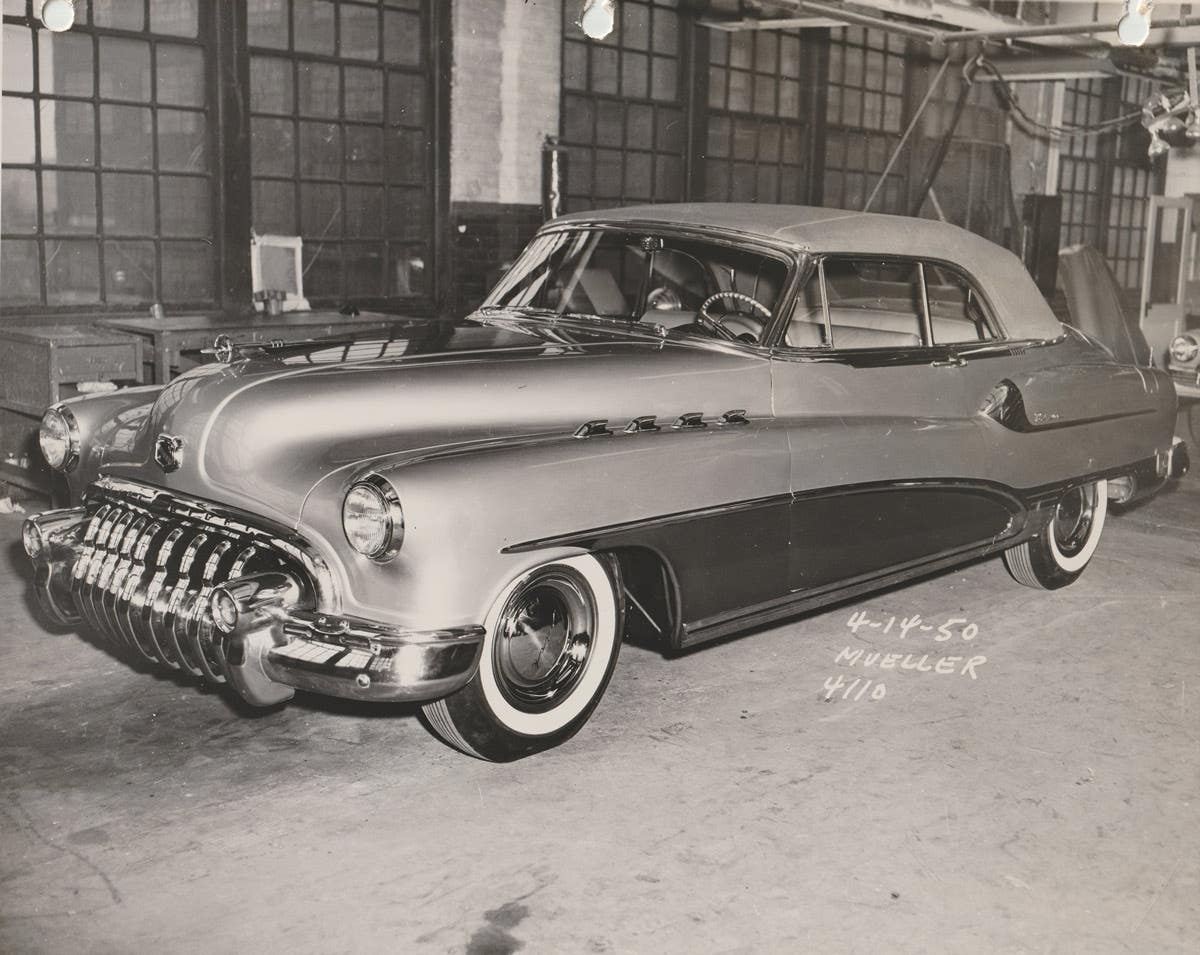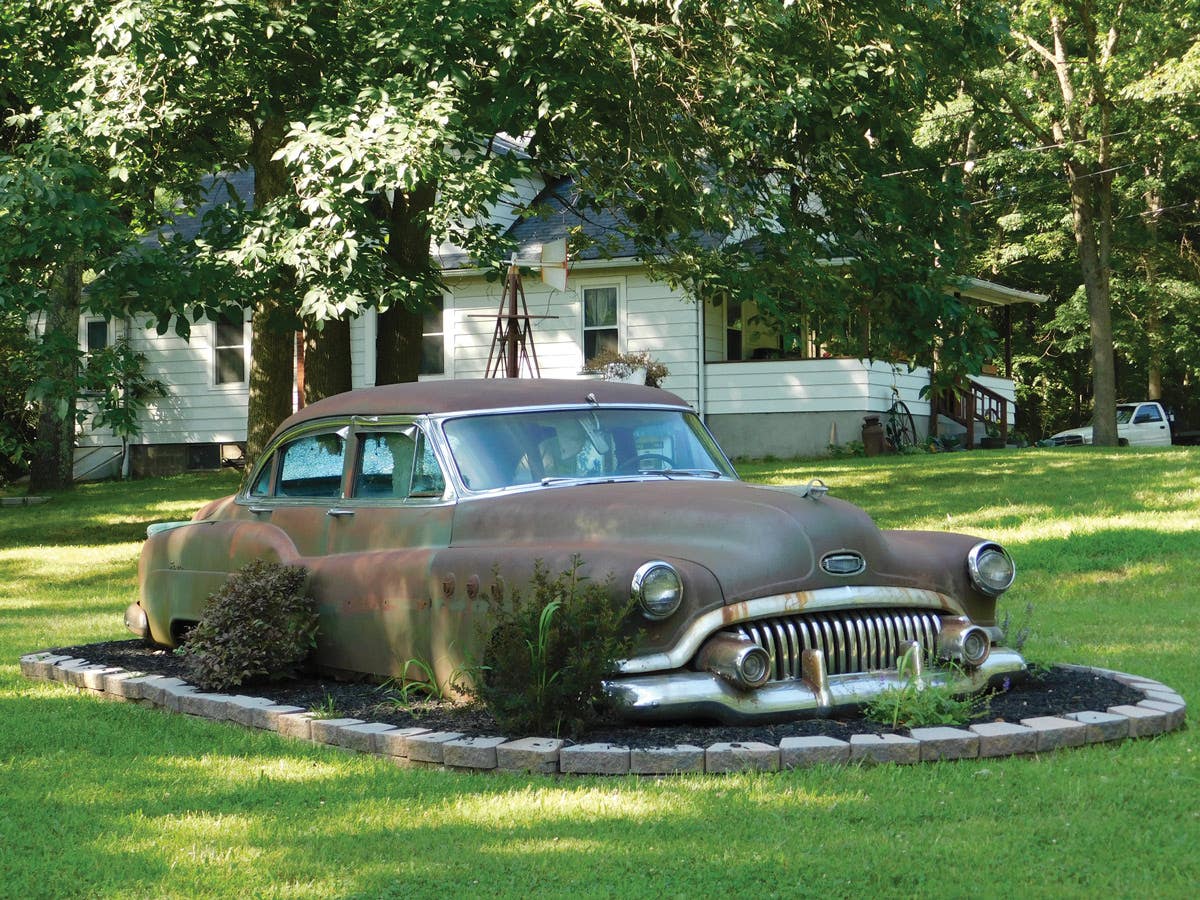Car of the Week: 1955 Chrysler Falcon concept car
The story of the 1955 Chrysler Falcon concept car that narrowly missed the crusher.
believes it was sent to South America before 1957, which saved it from being crushed. Freeze Frame Image LLC
Concept cars, aka “dream cars”, were built by vehicle manufacturers to explore and test design and engineering ideas for future production cars. The more successful ideas incorporated on concept cars would usually be tried on production cars in the immediate future, but occasionally, it would take a few years or even a decade for them to appear.
After too many years had passed, what was once a new idea would grow stale and become forgotten. However, one dream car’s styling remained so handsome, it was still relevant enough to influence a production car 50 years after it was built.
“The front end became the front end on the 2005 Chrysler 300,” says famed concept car collector Joe Bortz, longtime owner of the 1955 Chrysler Falcon concept car pictured here. “They used a very similar front end to what was on this car. And the way he put the taillights vertically into the bumpers, it’s absolutely gorgeous.”
Indeed, if you compare the shape of the quarter panels and the front-end design of the 2005 Chrysler 300 — admittedly a retro design — to the 1955 Chrysler Falcon, you can see the influence of the 20th century Falcon show car in the 21st century 300 production car, right down to its long-hood and short-rear-deck proportions. However, the two-passenger Chrysler Falcon wasn’t intended to test ideas for a future Chrysler 300 model, which debuted the same year as a production car, but as a possible Thunderbird killer. Ironically, Chrysler’s new C-300 killed the idea of building a Thunderbird fighter, as Chrysler considered the C-300 to already be a T-Bird competitor.
“Typical of companies, even Chrysler at that time, that cost a lot of money (to build a new car), and they had to save and put it into the production cars,” said retired automotive designer Virgil Exner, Jr., whose father designed the two-passenger 1955 Chrysler Falcon.
He confirmed that his father’s Falcon concept car was “definitely” designed to combat the new 1955 Thunderbird and Corvette, even if it wasn’t in the cards.
276-cid Hemi V-8 backed by a PowerFlite automatic transmission. Freeze Frame Image LLC
Exner ushers in the future
By the time the 1955 Chrysler Falcon show car debuted, Virgil Exner had been with Chrysler Corp. for about five years. He had cut his teeth on the Studebaker advertising account before finding employment during the Great Depression within the design studio of General Motors under Harley Earl. From GM, Exner went to work designing Studebakers, and in 1949 swung to Chrysler Corp. where he would become the head of the company’s planned Advanced Styling Studio. Chrysler Corp. management — including boss K.T. Keller, who famously insisted Chrysler Corp.’s cars accommodate drivers wearing hats, regardless of how dated that made the cars look — knew its cars were considered dull-looking by design standards. They hoped Exner would turn around the company’s image. In less than a decade, Exner did just that, peaking with the finned Forward Look Chrysler products of 1957.
After joining Chrysler, Exner quickly began drawing new and exciting car designs, many of which became full-size, three-dimensional concept cars. Among them was the 1951 Chrysler K-310, the 1952 Chrysler C-200, the 1953 Chrysler D’Elegance, the 1953 De Soto Adventurer and a handful more in 1954 alone. Most, if not all, were sporty two-doors in coupe or convertible configurations, often for just two passengers. By 1955, the design of Chrysler Corp. production cars had hit their stride with looks that were as fashionably modern as anything from Ford Motor Co. and General Motors, its top competitors.
The Falcon takes off
Virgil Exner, Jr., was truly his father’s son, and under his father he developed his own artistic talents that would lead him into a parallel career in automobile design. At the time the 1955 Chrysler Falcon was designed, Exner, Jr. was a college student and was keenly aware of his father’s design philosophies and his projects that employed them.
“At that time, he was trying to put forth more classic front ends instead of the wide mouths that were going on at the time,” Exner, Jr., said. “That was his pride, and anything really with fins. He was always aware of aerodynamic design, and always preferred that and the simplicity of design. One of this favorite phrases was, ‘Simplicity is the keynote of good design.’”
Indeed, the Falcon is a sleek two-passenger car with minimal but effective ornamentation and shapes. Deep-set headlamps brace an essentially oval grille that graces only the center of the front end. The front fenders have a prow edge that leads a clean, front-to-back flank with chrome decoration only seen in the edge of the front fender louvers and the novel side exhaust along the rockers, along with the balance of lower-body trim aft the rear wheel openings. The vertical taillamps are mounted in the rear fender tips and are divided by likewise upright-mounted bumper bars, with a horizontal bumper bar set low at the rear. A deep wrap-around windshield caps off the clean design.
“In the 1950s, all cars had chrome all over them and on the side, wherever you could put it, and that car was done as an artistic masterpiece and didn’t need to be decorated like a Christmas tree,” Bortz said.
each of a different design, and one with the 15-in. wire wheels on this survivor. Freeze Frame Image LLC
As with many Chrysler Corp. dream cars of the period, Chrysler contracted coachbuilding firm Ghia in Turin, Italy, to build the Falcon. Chrysler supplied Ghia with drawings, specifications, a clay model and the chassis. Ghia would often make minor adjustments in building a body on the chassis and then ship the completed car back to the United States, and did so on this car. Chrysler Corp. was able to avoid paying duties on the Ghia-built show cars if it shipped them out of the United States or scrapped the cars within two years. While the show cars were in the U.S., Chrysler would show them and some employees, such as Exner, were allowed to use them. The Falcon was reportedly exposed to the public at the Chrysler Building in New York and was also among those that Exner occasionally drove. Three were built by Ghia at a cost of $20,000. One Falcon was red, one was a light blue and the third was gold, which Exner had repainted to black. Exner’s son recalls the black Falcon that his father drove being a head-turner while out on the road.
“It really stunned them,” Exner, Jr. said. “When he (Exner, Sr.) would bring it home, I was in college and home for the summer, and it was fun to drive. I enjoyed it very much, but I didn’t drive it a lot like I did some of the others — it was just fairly short drives that I made near our house in Birmingham, Michigan.”
this car differs from the featured car owned by Joe Bortz in having a crank hole in the grille and wheel covers. Virgil Exner, Jr. photo
Exner, Jr. recalled his father taking the Falcon and the De Soto Adventurer show cars on a long drive from Michigan to the races in Watkins Glen.
“One of the pictures of him in it is in the cockpit at Watkins Glen,” Exner, Jr. recalled. “We took a trip there with one of his (Chrysler) engineering friends and his wife, who drove the Falcon there. My mother, father and I drove the De Soto Adventurer (show car) there. I drove almost all the way there and back with the De Soto Adventurer, which I loved, and when we got to Watkins Glen, my father made a couple of laps with the Falcon.”
With a 170-hp/276-cid De Soto FireDome Hemi V-8 and PowerFlite automatic transmission in its 105-in.-wheelbase chassis, the Falcon provided a spirited driving experience. Had it been given a 300-hp/331-cid V-8 from a Chrysler C-300, the experience would certainly have been even more exhilarating.
The last surviving Falcon
Of the three Falcons originally built, only Bortz’s example is known to remain. He believes it was one of the Chrysler Corp. concept cars sent out of the United States before duties had to be paid on it, and as a result, it was saved rather than destroyed. In the mid-to-late 1980s, Bortz was searching out and collecting Ghia-built Chrysler concepts to display alongside his General Motors concepts. He found the Falcon offered for sale by a used car dealer in New Jersey who made him feel nervous about the transaction, so he wanted to seal the deal and get out as quickly as possible.
“I felt very uneasy about sending him the payment and then waiting for a transport company to pick it up, so I arranged for a cashier’s check and flew out to buy the car,” Bortz recalled. “I called some local guy who said he was a transporter, and he was supposed to meet me there at a certain time so I could pay for it and load it up and drive back with him in the cab. When the flatbed arrived, it was being driven with two kids. One was 16, one was 18, because the owner was too busy to come pick it up. The transporter was a broken down flatbed truck, and I was going to ride with them, but they hadn’t slept that night and the driver started driving off the road with the car on it. I said, ‘Move over, I am going to drive!’ It was a horrible trip, but I got the car home.
“At one time, I owned 10 Ghia cars that were designed by Virgil Exner, but there was no comparison — this was totally the stand out,” Bortz added. “The dealer also had a Mercedes 540K roadster, and at the time, I said, ‘I really like this car better than the 540K roadster,’ and that’s a pretty good-looking car.”
Since buying the Falcon about 40 years ago, Bortz has had to only maintain it. He doesn’t know much of its history before he purchased it, but believes it was repainted, perhaps in South America, as it now wears a light-green metallic color on its body. The car has occasionally been shown on the concours circuit and is slated to return to the 2025 Pebble Beach Concours d’Elegance as part of a Ghia class. Bortz says the Falcon’s appearance there will be a homecoming of sorts.
“At Pebble Beach, they really didn’t get into showing anything in the way of concept cars and they didn’t do a lot of American postwar cars. In fact, they didn’t do any up until the 1989... They were worried if they brought in postwar American cars that there would be a lot of flack. Then, in 1989, they decided to experiment and use my concept cars to put their toe in the water to see if there would be a lot of complaints of newer cars. So they put the concepts on the front of the lodge, not on the back, and if they got complaints, they could say it was not a main part of the show. But if the concepts went over well, they could do it more in the future.
“The concept cars were a gigantic hit,” Bortz added. “Two years before that, it was a big hit to have the six Bugatti Royales at Pebble Beach, and the local news said the concepts were an even bigger hit.
“In 1991, I believe, they started concept cars being on the back lawn. The Falcon was one of my cars that was on the lawn the second year, because it’s an important car.”
Bortz has since sold his other Ghia cars, but kept the Falcon since it’s one of his favorites.
“It’s absolutely gorgeous,” he says.
Love concept cars? Here are a few more articles for your reading enjoyment.
SHOW US YOUR WHEELS!
If you’ve got an old car you love, we want to hear about it. Email us at oldcars@aimmedia.com
If you like stories like these and other classic car features, check out Old Cars magazine. CLICK HERE to subscribe.
Want a taste of Old Cars magazine first? Sign up for our weekly e-newsletter and get a FREE complimentary digital issue download of our print magazine.
Angelo Van Bogart is the editor of Old Cars magazine and wrote the column "Hot Wheels Hunting" for Toy Cars & Models magazine for several years. He has authored several books including "Hot Wheels 40 Years," "Hot Wheels Classics: The Redline Era" and "Cadillac: 100 Years of Innovation." His 2023 book "Inside the Duesenberg SSJ" is his latest. He can be reached at avanbogart@aimmedia.com



